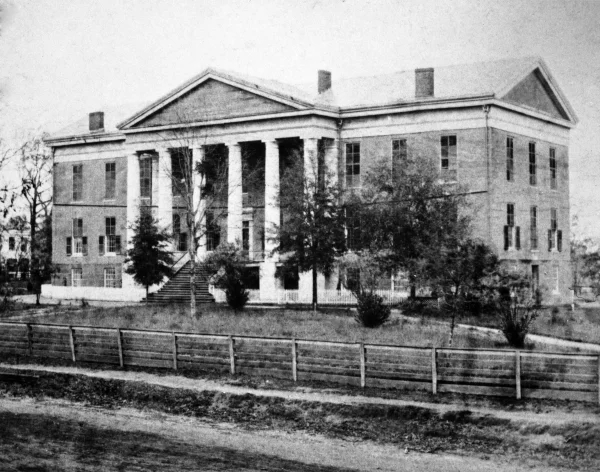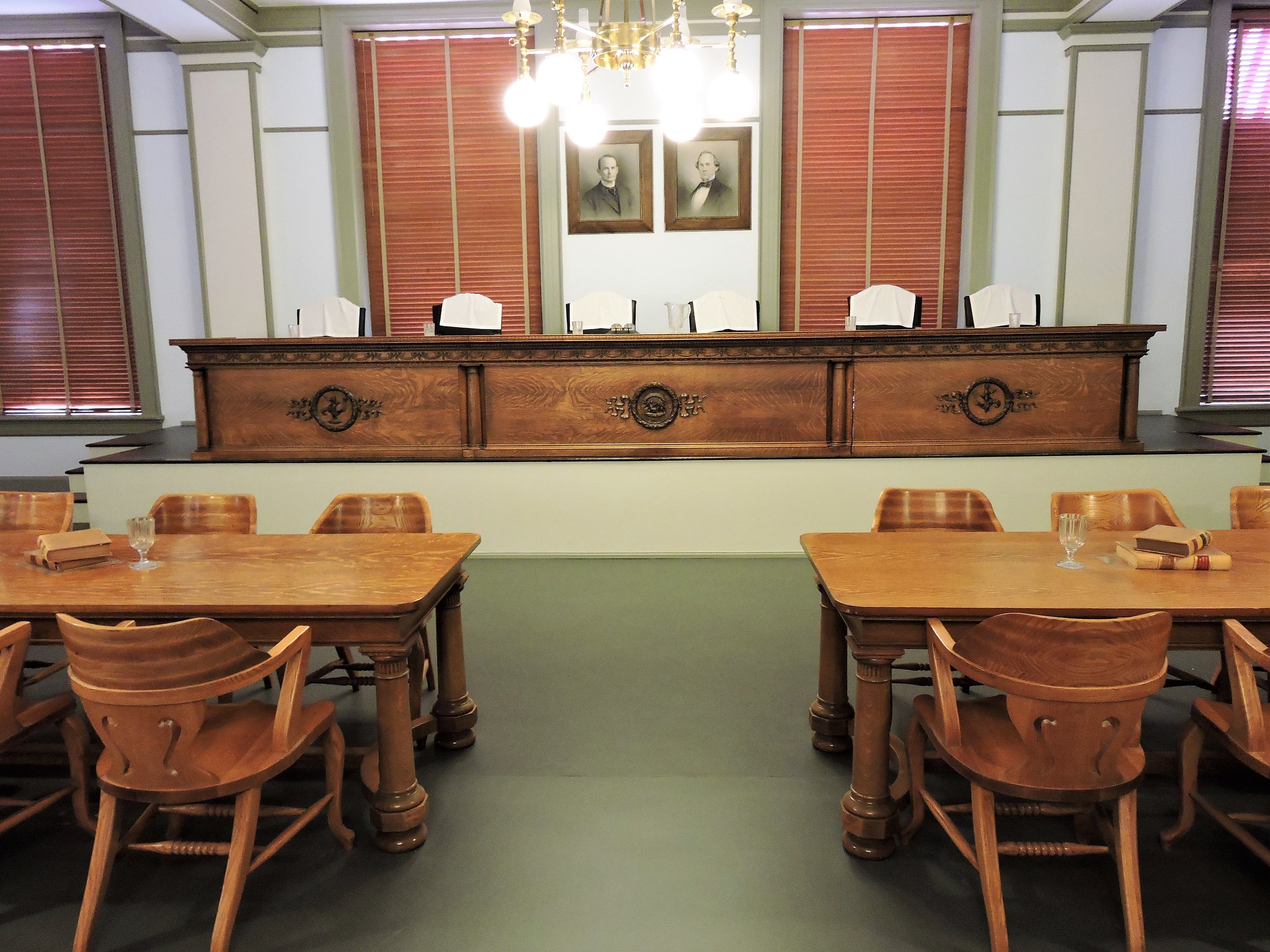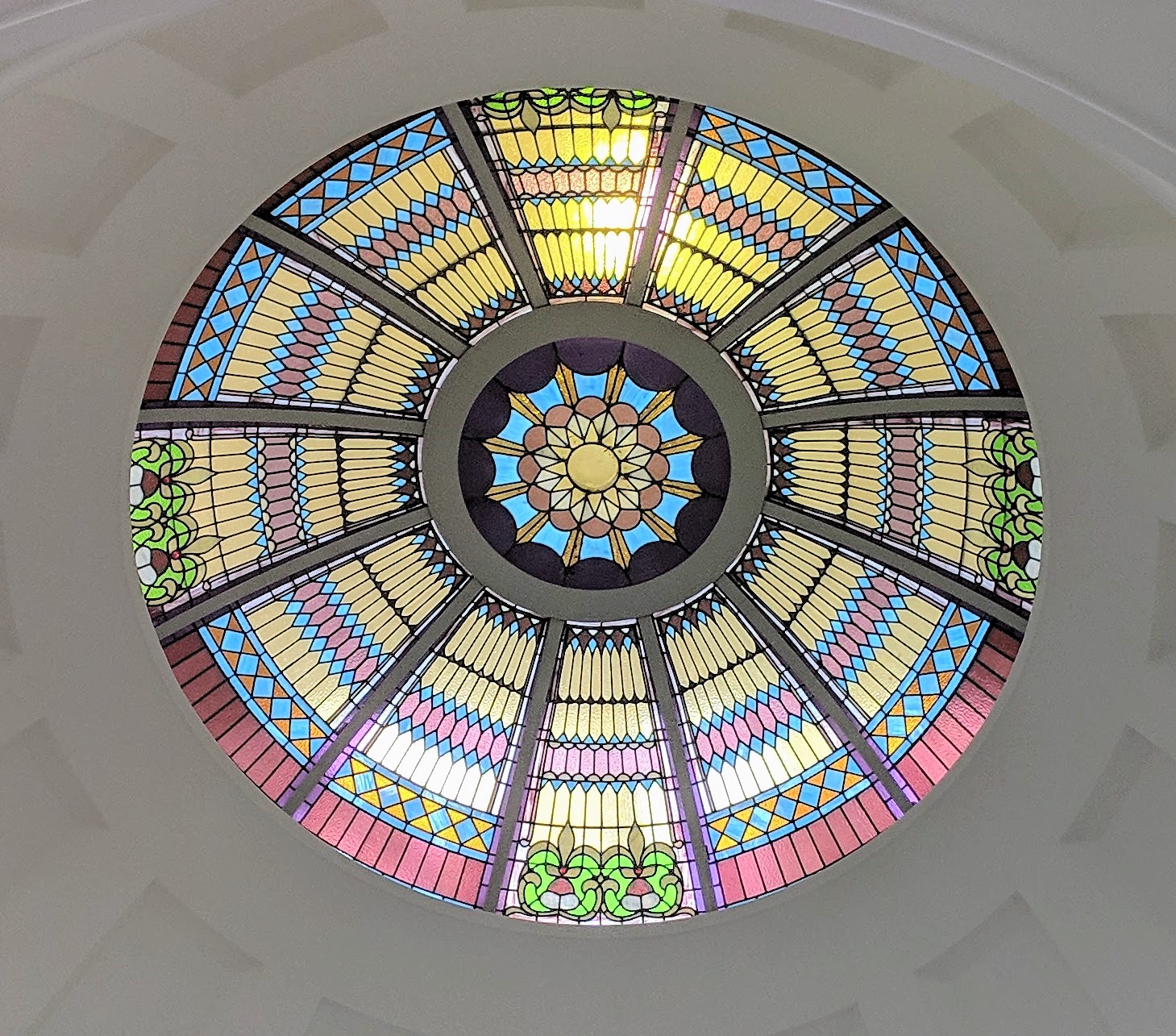The Historic Capitol of Florida
Florida’s Historic Capitol and Museum
Florida’s Historic Capitol
Address:
400 South Monroe Street
Tallahassee, Florida
U.S.A.
32399
Hours:
Monday-Friday: 9:00 AM to 4:30 PM
Saturday: 10:00 AM to 4:30 PM
Sunday and Holidays: Noon to 4:30 PM
Closed: Thanksgiving and Christmas days
Parking: During certain times of the year, like the Legislative session, parking can be difficult downtown. Several streets surrounding the capitol complex are one-way streets. Downtown Tallahassee has an extensive parking map that details street parking, state parking (for employees) and public parking.
There is wheelchair access throughout the building. Entrance at the west-side entrance.
The Museum also puts on several events during the year, including movies, speakers, concerts, and other events.
Contact
Phone: (850) 487-1902
Fax: (850) 410-2233
Email: info@historiccapitol.gov
First Buildings
When the British Empire governed Florida, it split the state in two in order to facilitate business. One capital was at St. Augustine while the other was at Pensacola. The two cities were about twenty days of hazardous travel apart. The dual capitals continued until 1824, when Tallahassee was chosen as the new capital. Tallahassee was the midway point between the two cities. The first capitol building was actually three log cabins constructed for the first territorial governance in November, 1824.
Source: State Archives of Florida
A new building was constructed in 1826, it was considered the first permanent capitol for the territory. It was later torn down c. 1840. Five years later, Florida joined the Union and petitioned the government for money to build a new capitol. In 1845, a new building was completed (the main part of the old capitol). The photo below shows the capitol in the 1870s before the cupola was added in the 1890s.
Source: State Archives of Florida
Additions
Source: State Archive of Florida
In 1902, the State Legislature of Florida decided to double the size of the building (seen above in 1900) and add a dome. They granted $75,000 for the project. Architect Frank Milburn oversaw the first expansion and the building of the dome. The stained glass ceiling (which the dome covers) allows light into the building and is over the grand staircase. Awnings were also added during this time period (and have remained) in order to block out sunshine and heat.
In 1923, the capitol was again expanded with two new wings and a marble interior. Florida native, Henry Klutho, oversaw this part of the project. The last additions were to build out chambers for the State House of Representatives (1936) and the State Senate (1947).
Source: State Archives of Florida
Selected Moments and People
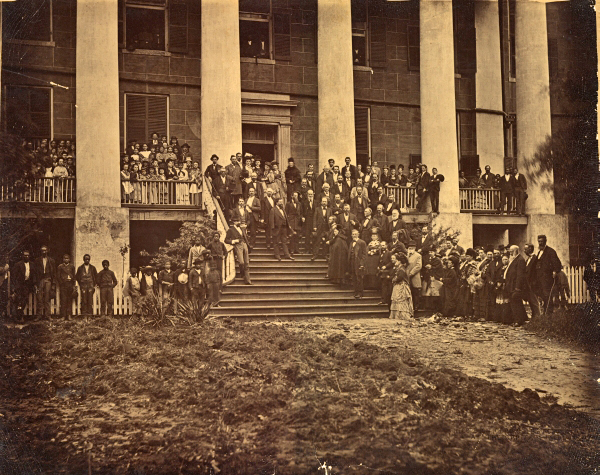
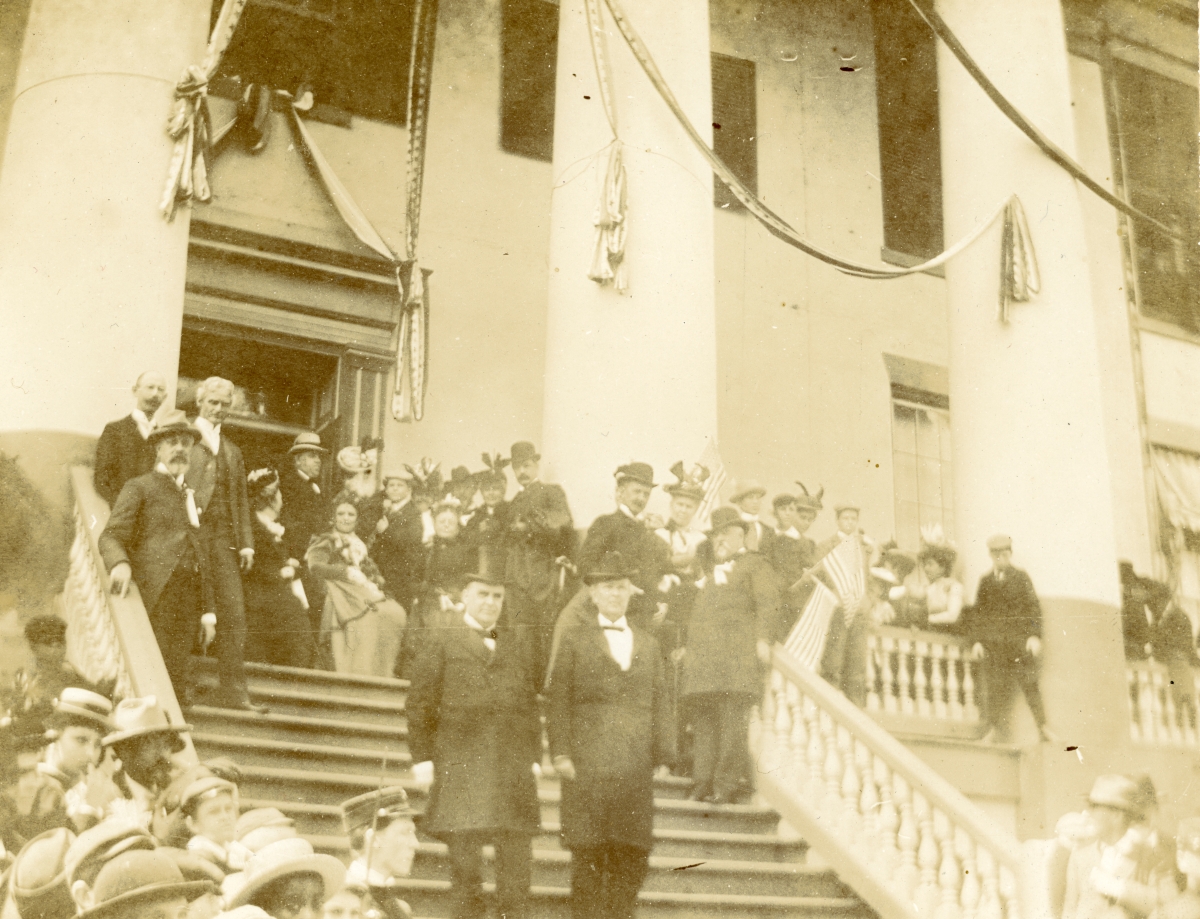
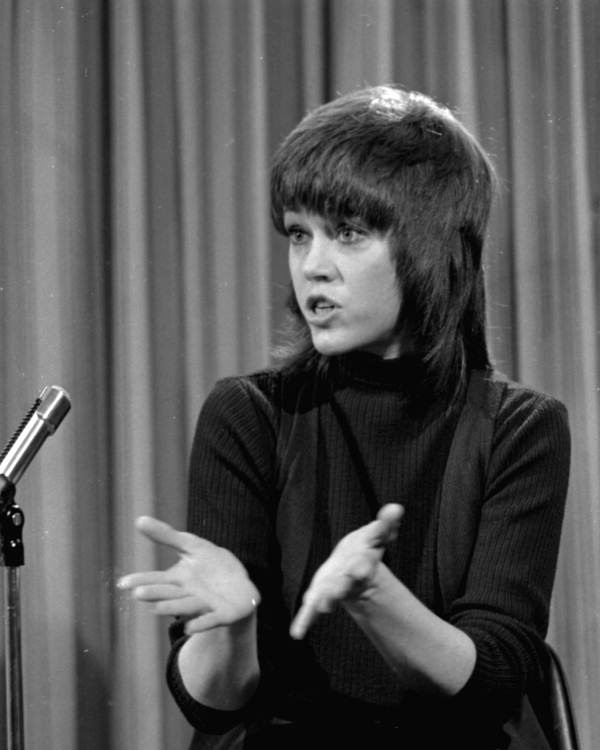
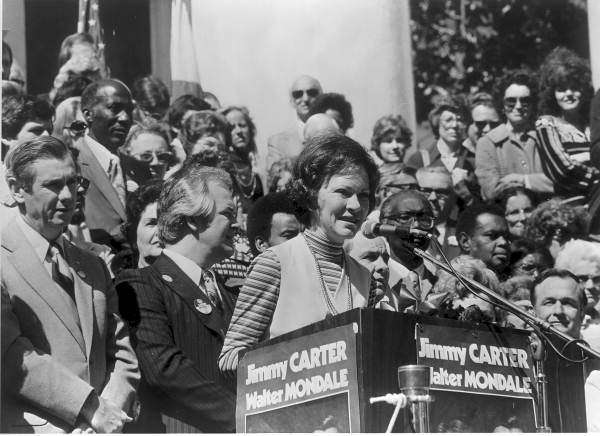
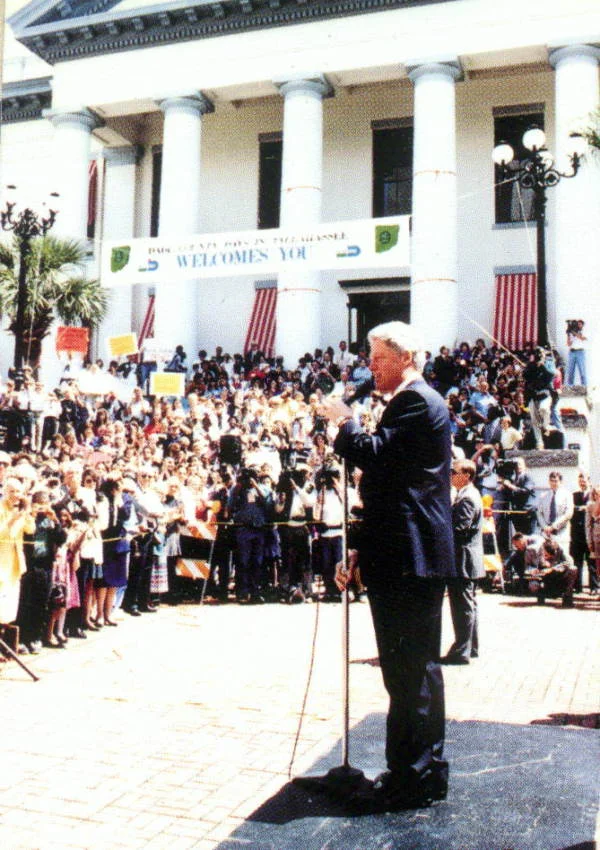

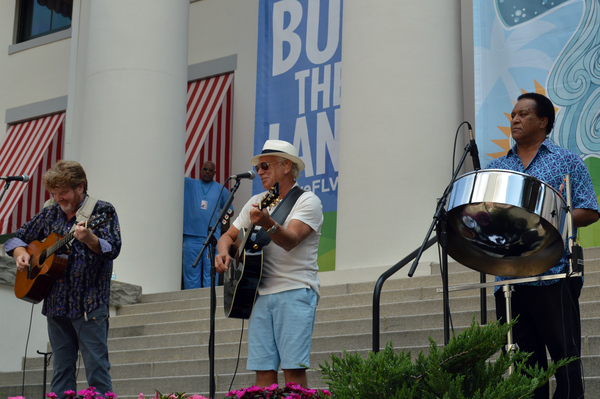
Governor Sterns welcomes Harriet Beecher Stowe to the Capitol in 1874. Stowe is on the sixth step from the bottom in black. Stearns is in the middle. Stowe wrote Uncle Tom’s Cabin in 1851 and moved to Mandarin, Florida in 1867. Image is from State Archive of Florida.
President McKinley (front left) visited Tallahassee in 1899. He is standing by Governor Bloxham (front right). Image is from the State Archive of Florida.
In 1971, Jane Fonda gave a quick speech at the capitol before heading to Florida State University to talk. Image is from the State Archive of Florida.
Rosalynn Carter came to Tallahassee in 1976, in order to campaign for her husband. Governor Askew is to the far left of the photo. Image is from the State Archive of Florida.
In 1995, President Bill Clinton gave a speech in the capitol courtyard, between the old and new capitol. Image is from the State Archive of Florida.
During the election dispute of 2000, news vans set up outside the capitol. It took thirty-six days to decide the outcome (with intervention from the government). Image is from the State Archive of Florida.
In 2015, Jimmy Buffet performed a concert on the steps of the old capitol. It was for the rally for the Everglades Coalition, who hoped to conserve more of the Everglades. Image from the State Archive of Florida.
Demolish Plans and Current Use
In 1974, Governor Reubin Askew asked for a new capitol for the state government as the current legislature had outgrown the building and the capitol was in a state of disrepair. The new capitol, a twenty two story building, was built behind the old capitol because of the plan to tear down the old building.
Instead, about 2000 people petitioned to save the historic capitol and renovate it. The state government agreed and plans for renovation and a new museum commenced. Between 1978 and 1982, the Department of General Services and the Department of State supervised the restoration of the building, making it one of the most documented restoration projects in the country. The principal architect leading the restoration was Hershel E. Shepard, who also worked on San Luis Mission and Fort Foster.
The capitol has been returned to its 1902 condition because it was the last time all branches of government were housed in the building. Today, it is a museum that has permanent exhibits on the state’s political history as well as occasional special exhibits. There are twenty-one rooms that can be toured. The tour starts with the pre-territorial government and ends with the modern day. The governor’s office has been restored to 1902 and the rooms housing the State House of Representatives, the State Senate and the State Supreme Court have been restored close to that time as well.
The Governor’s Private Office
The Governor’s private office has been restored to 1902, when Governor William Jennings bought a new mahogany desk and chair. The tour includes information about Jennings, his wife First Lady May Mann Jennings, and the reforms they started in conservation, education and labor.
The Stenographer and Secretary Office (Governor’s Staff Office)
The Stenographer’s Office houses an original document file cabinet (left) and some of the original labels still exist. Governor Jennings brought his sister-in-law, Grace Irene Marietta Mann, to the office and once tried to get her admitted to the all-male Florida Bar. She was refused entry. The only other person on Governor Jennings’ staff was his secretary, Charles Dickinson. Dickinson would answer mail and arrange the Governor’s schedule.
Florida State Supreme Court
The State Supreme Court met in the capitol building for ten years (1903-1913) until they relocated to a different building. The restored Court chamber included the original Supreme Court bench, the original attorney’s tables and the original railing.
Florida’s State Senate Chamber in the Historic Capitol
The State Senate and House of Representatives chambers are on opposite ends of the building on the upper floor. They’ve been restored to 1902, with some original furniture under glass. The desks placed in situ are recreations from the 1990s. The ceilings are twenty two feel tall and the wall colors are pastel reds, whites and blues.
The Recreated Dome
The sub-dome is above the Grand Staircase in the middle of the historic capitol. While the dome was originally added in 1902, it began leaking immediately and was removed by 1923. A frosted skylight was installed and remained until the restoration. During the restoration project, one hundred pounds of stained glass was discovered inside one of the walls. It was the original stained glass from the sub-dome.
Exterior Monuments
The Historic Capitol with one of the Monuments
There are several monuments on the ground of the historic capitol as well as old trees grown from cuttings from The White House and George Washington’s estate at Mount Vernon.
There are memorials to fallen law enforcement officers, combat wounded veterans, Martin Luther King, Jr., Captain John Parkhill, and Confederate soldiers.
The plaque to Martin Luther King, Jr. was placed in 1984 to commemorate Dr. King’s efforts in Florida during the Civil Rights Movement of the 1960s. There is a Civil Rights Heritage Walk downtown, very close to the capitol, that shows the significance of the movement in Tallahassee.
One obelisk is in memory of Captain John Parkhill, who was killed during the Third Seminole War in 1857. He was a native of Tallahassee and led a company of soldiers called the Leon Volunteers against Chief Billy Bowleg. The other obelisk is in memory of the men from Leon County who died in the Civil War. It’s more contemporary of the time than other Civil War monuments, being erected in 1881.
Save the Capitol! from the Florida Memory Blog/State Library and Archives of Florida. Post on the effort to save the old capitol from tear down, with contemporary pictures and video.
The National Park Service has a bulletin about some of the projects they do. This is about the historic capitol’s awnings and why they’re needed, the cost of the project and the schematics of the project.
The Florida Department of State has a chronological look at the capitol of Florida through the years, from the log cabins of 1826 to the current building of 1977. Pictures are included in the article.
Citations:
Robinson, Erik T. Images of America: Tallahassee. Arcadia Publishing. 2003
Hare, Julianne. Tallahassee: A Capital City History
Scripps Media, Inc. 40th Anniversary of Save the Old Capitol. WTXL. March 30, 2018.
Visit Tallahassee. Florida Historic Capitol Museum
Visit Tallahassee. Civil War Memorial.
Florida Center for Instructional Technology. Architecture of the Old Capitol. Exploring Florida.
Destination: Civil War. Tallahassee. Florida Public Archaeology Network.



